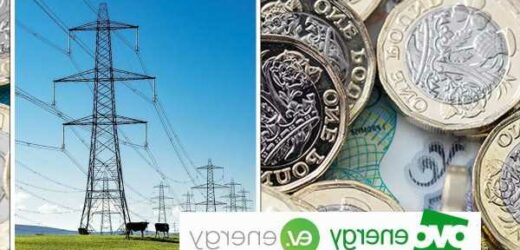What are blackouts and why might they happen this winter?
We use your sign-up to provide content in ways you’ve consented to and to improve our understanding of you. This may include adverts from us and 3rd parties based on our understanding. You can unsubscribe at any time. More info
A senior OVO Energy official has detailed an innovative new technology that could help the National Grid swerve blackouts in the future. Alex Thwaites, the Head of Zero Carbon Living at OVO explained to Express.co.uk, how during the height of the pandemic, OVO Energy customers, as a part of a trial scheme, helped balance the supply-constrained National Grid by sending electricity back from their electric cars. This trial involved “vehicle to grid” (V2G) technology, where the massive batteries in electric cars are used to store power when it’s cheap and sell it back to the grid at a profit when needed.
Speaking to Express.co.uk, Mr Thwaites said: “Electrifying transport is one of the biggest opportunities for the country.
“It’s imperative that we have an energy grid that’s fit for the future and suppliers offer products and tariffs to help both consumers and the grid. Electric vehicles are becoming mainstream with over one million plug-in cars in circulation to date.
“With more and more EVs coming to market, we need to find smart charging and grid balancing solutions to help support the network.
“To do this, type of use tariffs like Charge Anytime and two-way charging, such as Vehicle-to-Grid technology, can help reward customers for supporting our vital national infrastructure.”


This V2G software allows the car to charge up its battery during times of the day when electricity is cheap, like in the middle of the night.
With this stored electricity, the car could then sell power back to the National Grid during peak times, when electricity is expensive.
By doing so, electric vehicles could play a critical role in preventing winter blackouts in the future, as their batteries are powerful enough to store large amounts of energy.
Mr Thwaites continued: “During the height of the pandemic, National Grid issued an alert warning of a supply crunch on the electricity grid.


“OVO Energy customers and their Vehicle-to-Grid chargers powered the grid by exporting excess energy from their electric vehicles. It was the biggest mobilisation of UK customers supporting the grid – and making money from it too.
“In the future, if just half of all EVs were V2G-enabled by 2030 (approximately 5.5million) this would provide at least 5GW of export capacity – estimated to be enough to meet approximately 77 percent of all annual system balancing needs including instances of tight energy supply margins.”
According to recent analysis conducted for Eaton, using V2G electric chargers, could save the typical homeowner about £1,000 per year. They noted that this figure is approximately equal to 90 percent of the average annual cost of charging a mid-sized family car.
DON’T MISS:
Hidden chamber found inside Great Pyramid after thousands of years [REVEAL]
Easter Island mystery after new moai statue found at bottom of lagoon [REPORT]
Energy bill lifeline for millions as Treasury poised to scrap £3k rise [INSIGHT]

As households across the country grapple with the worst effects of an energy crisis triggered by the skyrocketing prices of fossil fuels like gas, Mr Thwaites noted that it was imperative for “energy suppliers to offer a clean and affordable alternative to customers”.
He said: “Domestic vehicles and taxis make up approximately 61 percent of all road transport emissions in the UK, so, as we edge ever closer to the UK’s ban on new petrol and diesel cars and 2035 net zero emissions goal, the time has never been better for an EV revolution.
“If we are to fulfil our renewable and electric future, decarbonising heat and transport, keeping energy costs low and the grid stable, we need to find smart charging solutions capable of integrating growing numbers of electric vehicles onto the network without compromising energy security. We want to change that.
“We need a resilient and decarbonised grid and an orchestrated approach which rewards customers for powering the grid when the UK needs it most.
“I’m excited to see a future where millions more customers and their EVs can earn revenue from powering at greener times of the day, and sell power back to the grid to support balancing. The future is already here.”
Source: Read Full Article


